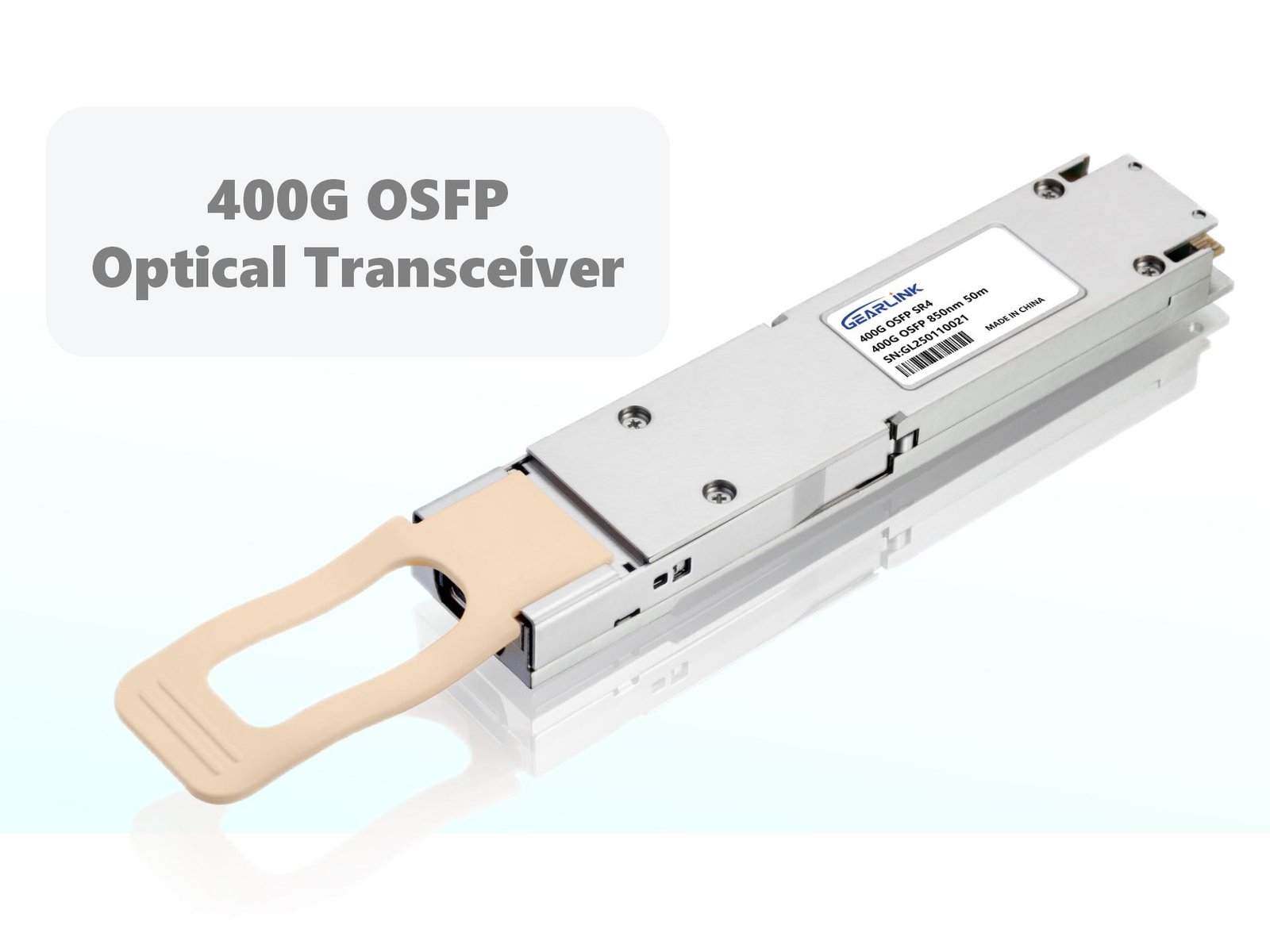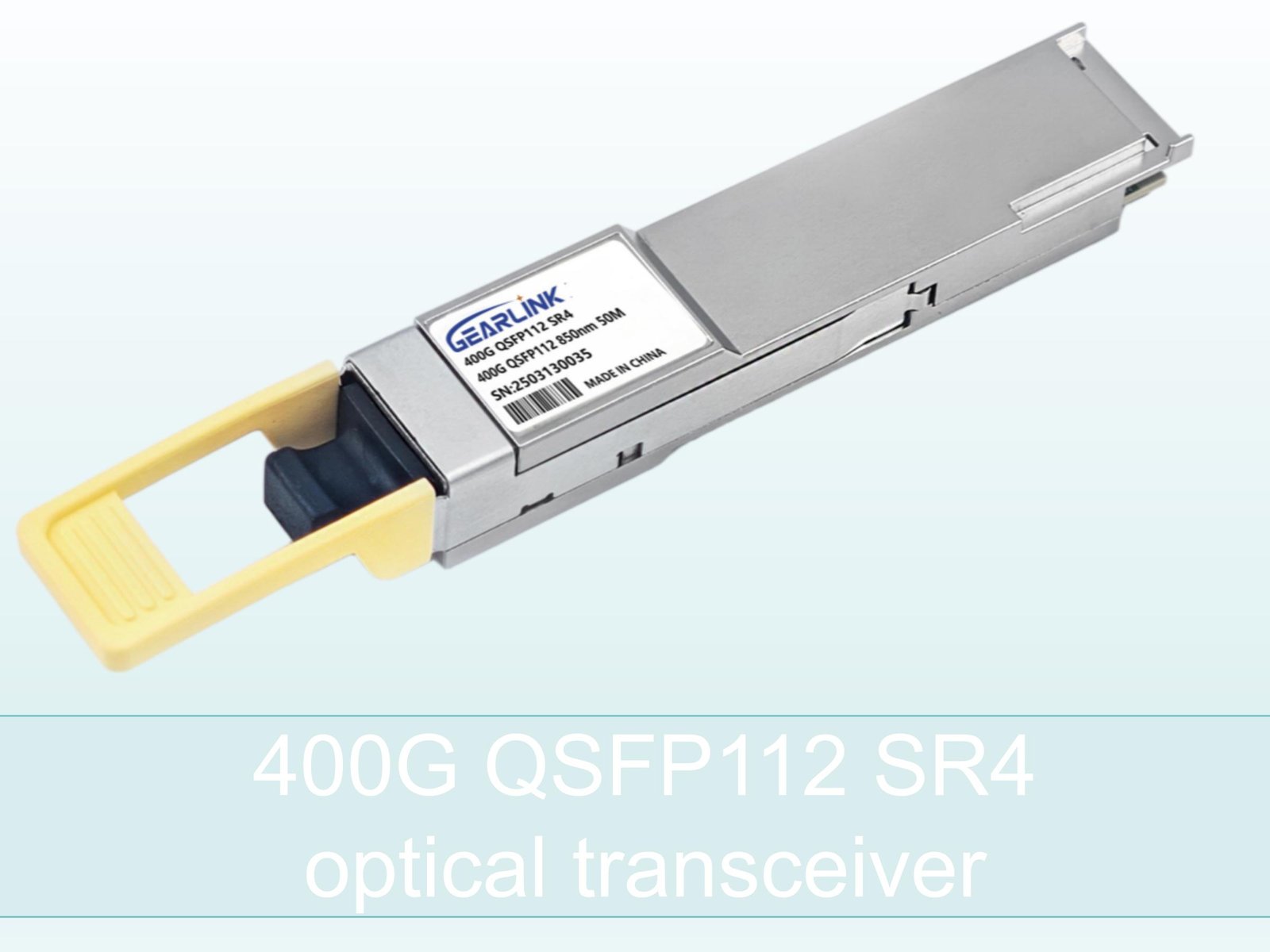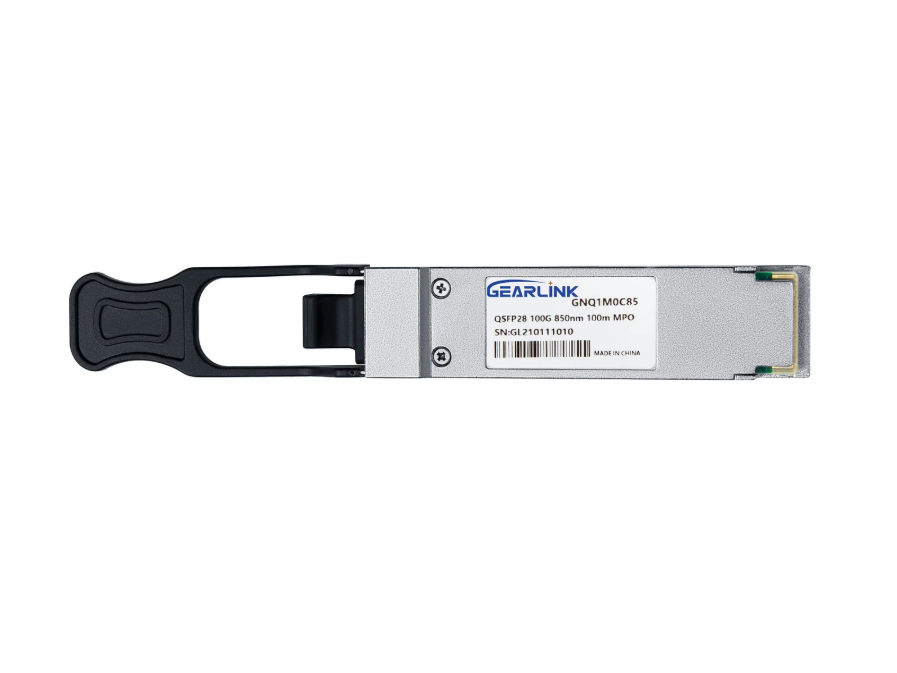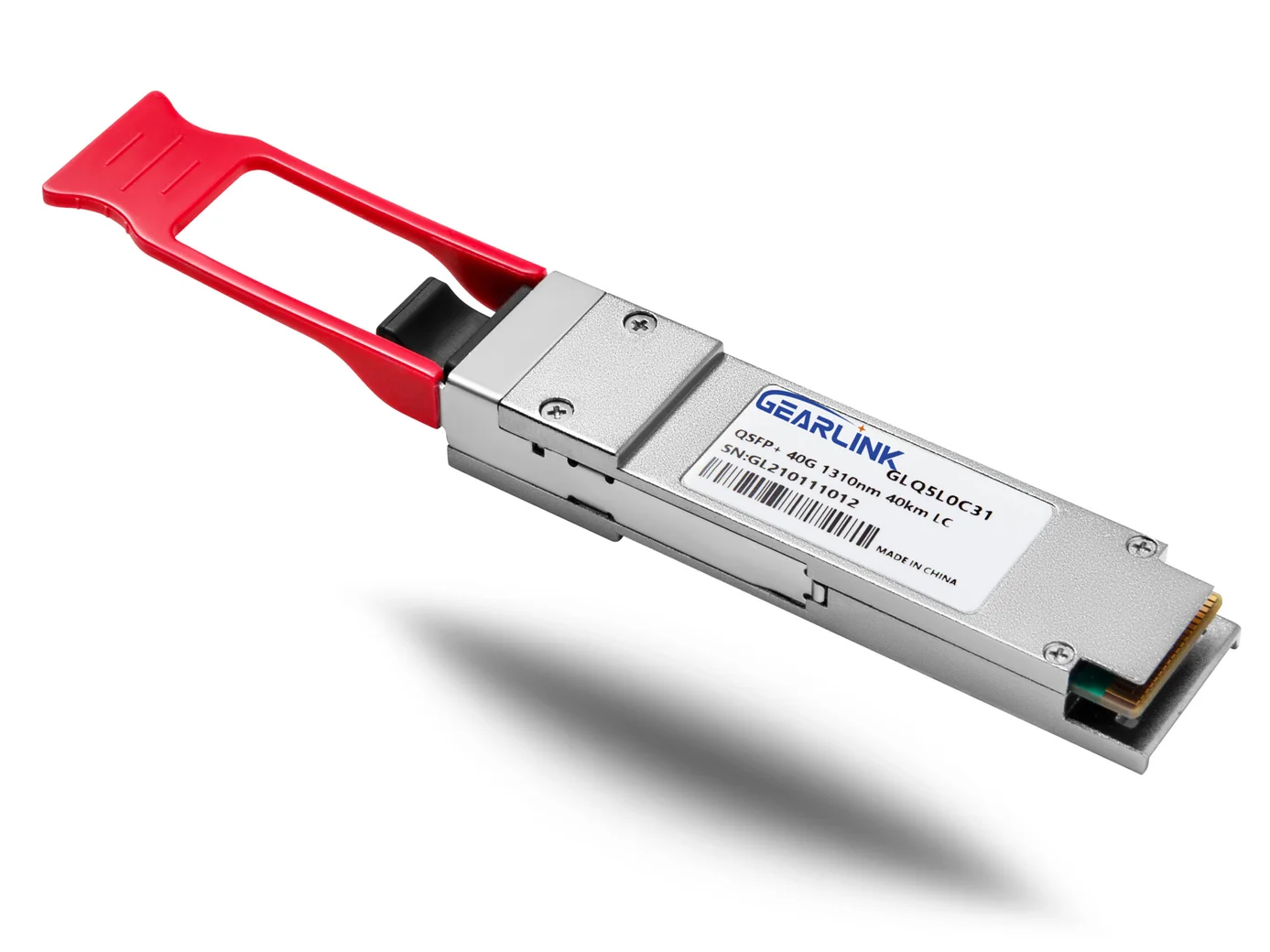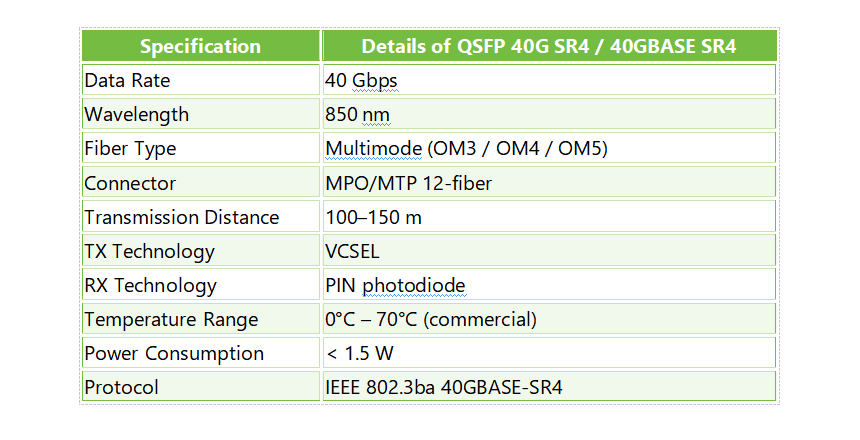1. Introduction to 400G OSFP Optical Transceivers
1.1 What is a 400G OSFP Optical Transceiver?
The 400G OSFP (Octal Small Form-Factor Pluggable) optical transceiver is a high-speed, high-bandwidth, and high-density module designed for large-scale data transmission in data centers and communication networks. The term “Octal” refers to its eight internal channels, each supporting a 50Gbps transmission rate, enabling a total bandwidth of 400Gbps. This meets the demand for ultra-fast data transport in modern data centers and HPC systems.
Compared to QSFP transceivers, OSFP modules are slightly larger and are not backward compatible. The 400G OSFP modules typically use either four 100G PAM4 channels or eight 50G PAM4 channels, providing higher throughput in a compact form. They are widely deployed in 400G and even 800G networks and are scalable to future 1.6T applications.
1.2 Protocols of 400G OSFP Optical Transceivers
400G OSFP optical transceivers support a variety of protocols, including:
400G FR4: Uses 4 channels, each at 100G, supporting up to 2 km over single-mode fiber. Suitable for short-range interconnections within data centers.
400G LR4: Employs 100G PAM4 WDM over single-mode fiber with a transmission distance of up to 10 km, ideal for large-scale HPC center interconnects.
400G DR4: Offers a 500 m range and is cost-effective with lower power consumption, making it favorable for medium-distance links.
400G SR8: Based on 50G PAM4 across 8 channels over multimode fiber, supporting short-range, high-density interconnects in data centers.
400G SR4: Utilizes 100G PAM4 over 4 channels on multimode fiber for dense, short-distance interconnect environments.
In early-stage development, multiple protocol options exist for different use cases. However, as the market matures, a few protocols typically become mainstream, meeting the needs of most application scenarios.
1.3 Classifications of 400G OSFP Optical Transceivers
Based on transmission rate, media type, and transmission distance, 400G OSFP transceivers can be categorized into several types, each tailored to specific application environments.
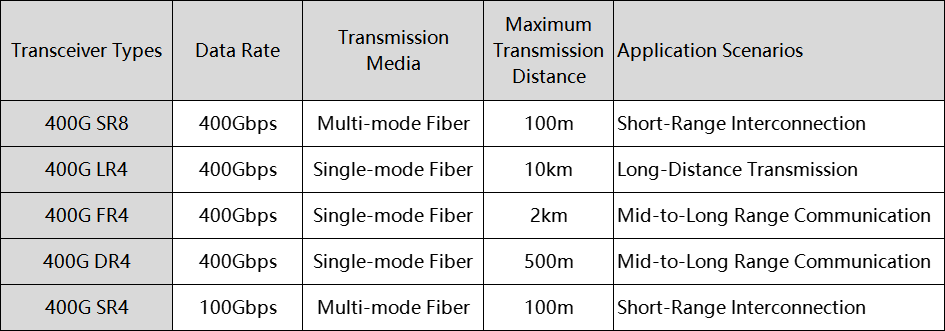
2. Application of 400G OSFP Optical Transceivers in High-Performance Computing Centers
2.1 Bandwidth Demands in Data Centers
The explosive growth of data-intensive technologies—such as big data, AI, cloud computing, and 5G—has led to an exponential increase in bandwidth demands. According to Cisco, global IP traffic reached 40 ZB per year by 2023, with projections estimating 50 ZB by 2026. A large portion of this traffic comes from inter-data center communications.
Traditional 100G and even 200G solutions are increasingly insufficient. As a result, data centers seek higher bandwidth and lower latency solutions. 400G OSFP optical transceivers, with their ultra-high speed and performance, are becoming essential components in modern data center core networks.
2.2 Importance of OSFP Modules in High-Performance Computing Centers
HPC centers are central to scientific computing, simulations, and data-intensive tasks—ranging from weather modeling to genomic analysis. These systems demand not just computing power, but also fast and reliable data transmission.
400G OSFP optical transceivers play a vital role in several HPC scenarios:
High-Speed HPC Cluster Interconnects: HPC clusters consist of interconnected nodes that rely on high-speed links. The 400G OSFP module facilitates such interconnections efficiently.
Storage Area Network (SAN) Links: Modern SANs require high-bandwidth connections to handle large-scale data. OSFP modules meet these needs with reliable and low-latency optical links.
Low-Latency Computing: The low-latency and high-throughput nature of 400G OSFP transceivers helps meet strict HPC data flow requirements.
2.3 Advantages and Challenges of OSFP Optical Transceivers
Advantages:
High Bandwidth: 8 channels of 50G each enable full 400G transmission, fulfilling the needs of bandwidth-intensive HPC environments.
Low Power Consumption: OSFP transceivers are optimized for energy efficiency, helping reduce operational costs in large-scale supercomputing centers.
Scalability: Many OSFP modules are forward-compatible, supporting 800G (100G per channel), and are adaptable for future upgrades to 1.6T as hardware evolves.
High Density: Despite delivering significantly higher bandwidth, OSFP modules are only slightly larger than their 100G counterparts, allowing for increased port density.
Challenges:
High Cost: Due to limited manufacturing sources and advanced technology requirements, 400G OSFP modules remain costly, particularly during early deployment phases.
Technical Complexity: Developing 400G OSFP transceivers involves advanced optical design and precision manufacturing. Challenges like chip availability and stable component integration remain critical to success.
3. Conclusion
The 400G OSFP optical transceiver is increasingly vital in the infrastructure of advanced high-performance computing networks. Its ultra-high bandwidth and low latency capabilities align with the demands of future networking. As issues in chip supply chains and component stability are resolved, manufacturers that can overcome these hurdles will have the advantage in capturing market share in the evolving optical transceiver industry.
